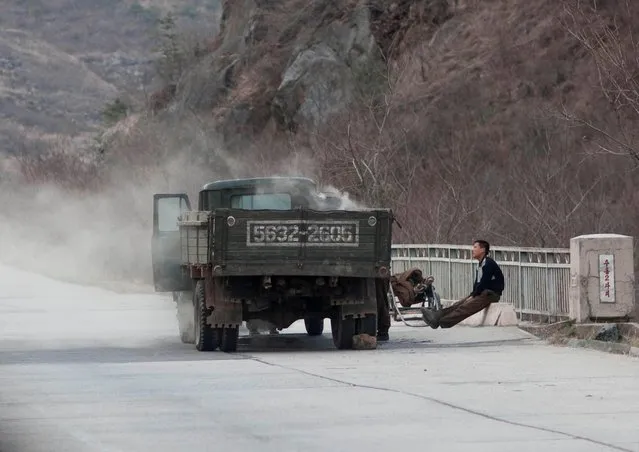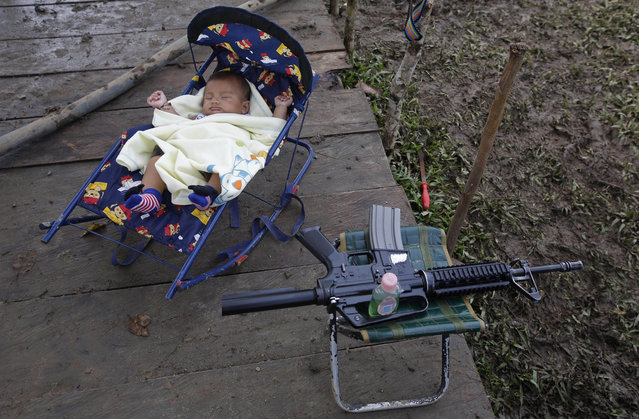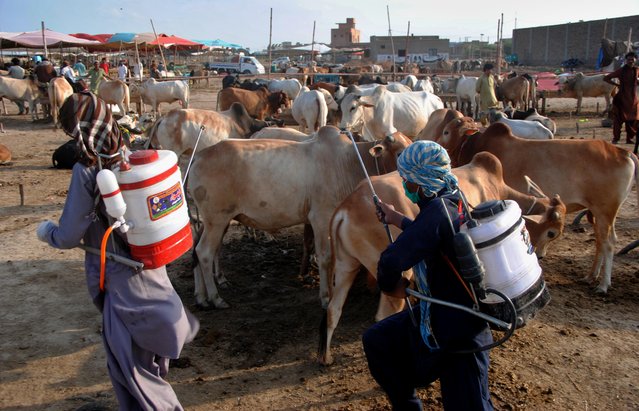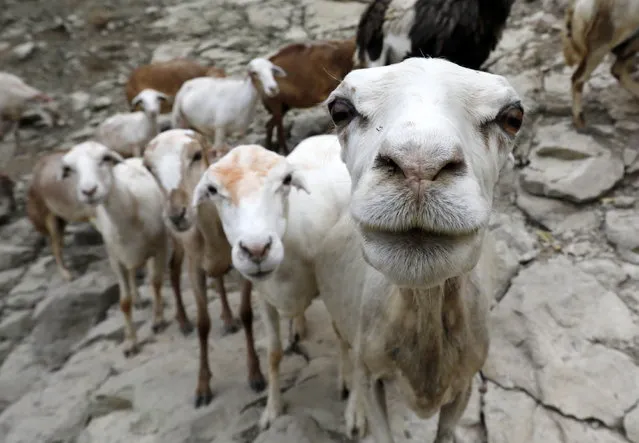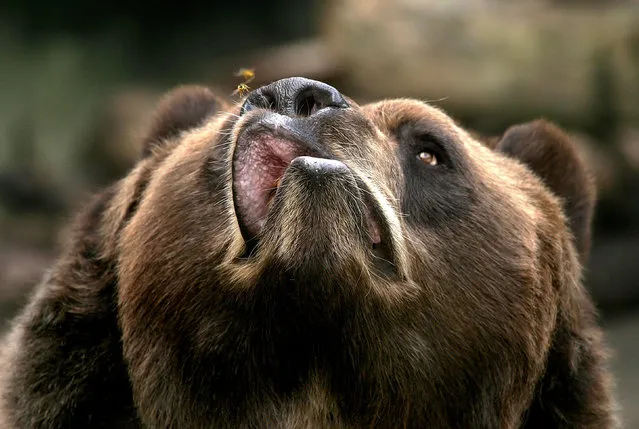
These picture capture the hilarious moment a cheeky little bee decides to pick on a grumpy bear. A massive Kodiak bear is finding this pesky bee a pain in the bear-hind as it buzzes around his head just out of reach. This incredible comedic moment was captured in the bear den at Buffalo Zoo. Terry Cervi from Buffalo, New York, U.S.A. saw this incredible sight on one of her regular visits to her local zoo. (Photo by Terry Cervi/Caters News)
14 Dec 2013 14:36:00,post received
0 comments

